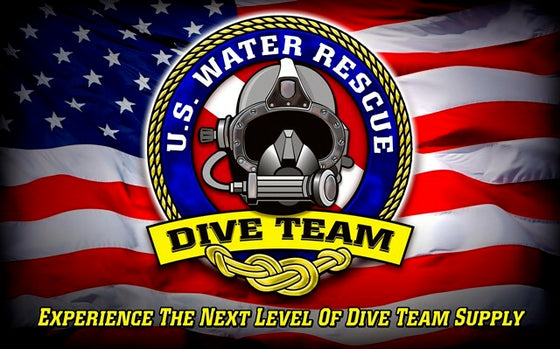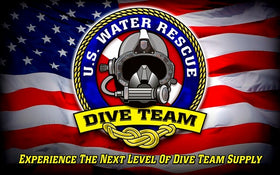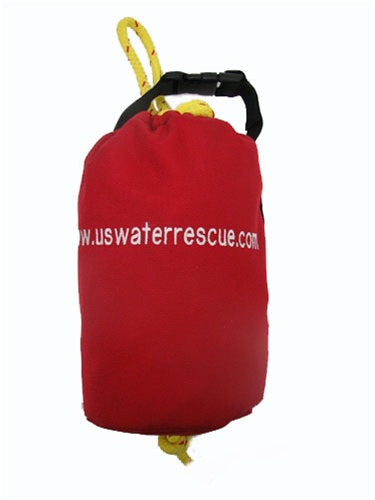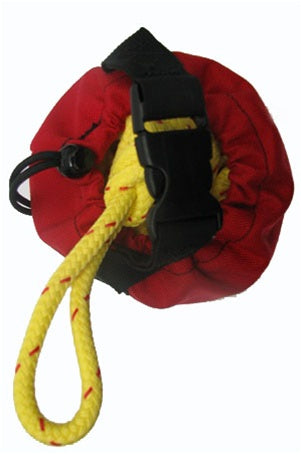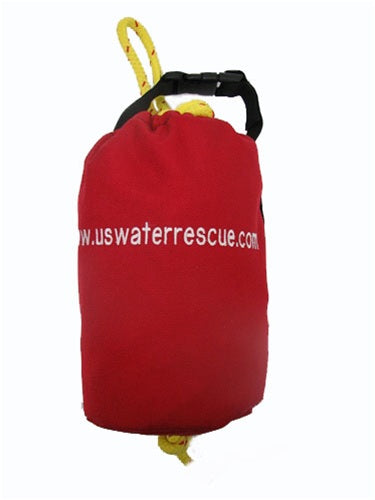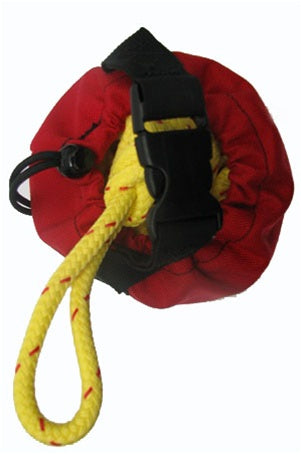Throw Bag w/ 75' of 8mm Throw Line
TU-MFP Throw
- All fabrics and hardware are made in USA
-
Fabric: 1000 weight urethane coated, Dupont certified Cordura nylon
-
"Strong" 550 Cord for draw string
- Weather resistant (NOT waterproof)
- Thread: #92 bonded Solar Max nylon
- All seams double stitched and bound
-
Embroidered uswaterrescue.com
-
Red for visibility
-
Double Box stitching on carry handles
-
Fastex Buckle (Neuxs, not the cheap ones)
- Designed AND made in USA
- No Bull Lifetime Warranty
-
Dimensions: 8.5"x8.5"
- Spliceable
- Bright yellow cover aids in visibility
-
Floats Indefinitely
-
Yellow
| Size | Weight | Tensile | ||
|---|---|---|---|---|
| lbs/100' | g/m | lbs | kg | |
| 5/16 (8mm) | 2.7 | 39.4 | 1,800 | 817 |
Sunlight/UV:
Very little degradation from sunlight. Can be used outside over long term if inspected regularly.
Chemicals:
Polypropylene has excellent resistance to most acids and alkalines, except chlorosulphonic, concentrated sulfuric acids, and chlorinated hydrocarbons at 160°F. Polypropylene also withstands most diluted bleaching solutions.
Heat:
Polypropylene melts at 330°F with progressive strength loss above 200°F.
Dielectrics:
Good resistance to the passage of electrical current. However, dirt, surface contaminants, water entrapment, and the like can significantly affect dielectric properties. Extreme caution should be exercised any time a rope is in the proximity of live circuits.
Sheaves:
Recommended sheave diameter to rope diameter is 8:1.
Working Loads:
No blanket safe working load (SWL) recommendations can be made for any line because SWL's must be calculated based on application, conditions of use, and potential danger to personnel among other considerations. It is recommended that the end user establish working loads and safety factors based on best practices established by the end user's industry; by professional judgment and personal experience; and after thorough assessment of all risks. The SWL is a guideline for the use of a rope in good condition for non-critical applications and should be reduced where life, limb, or valuable property is involved, or in cases of exceptional service such as shock loading, sustained loading, severe vibration, etc. The Cordage Institute specifies that the SWL of a rope shall be determined by dividing the Minimum Tensile Strength of the rope by a safety factor. The safety factor ranges from 5 to 12 for non-critical uses and is typically set at 15 for life lines.
